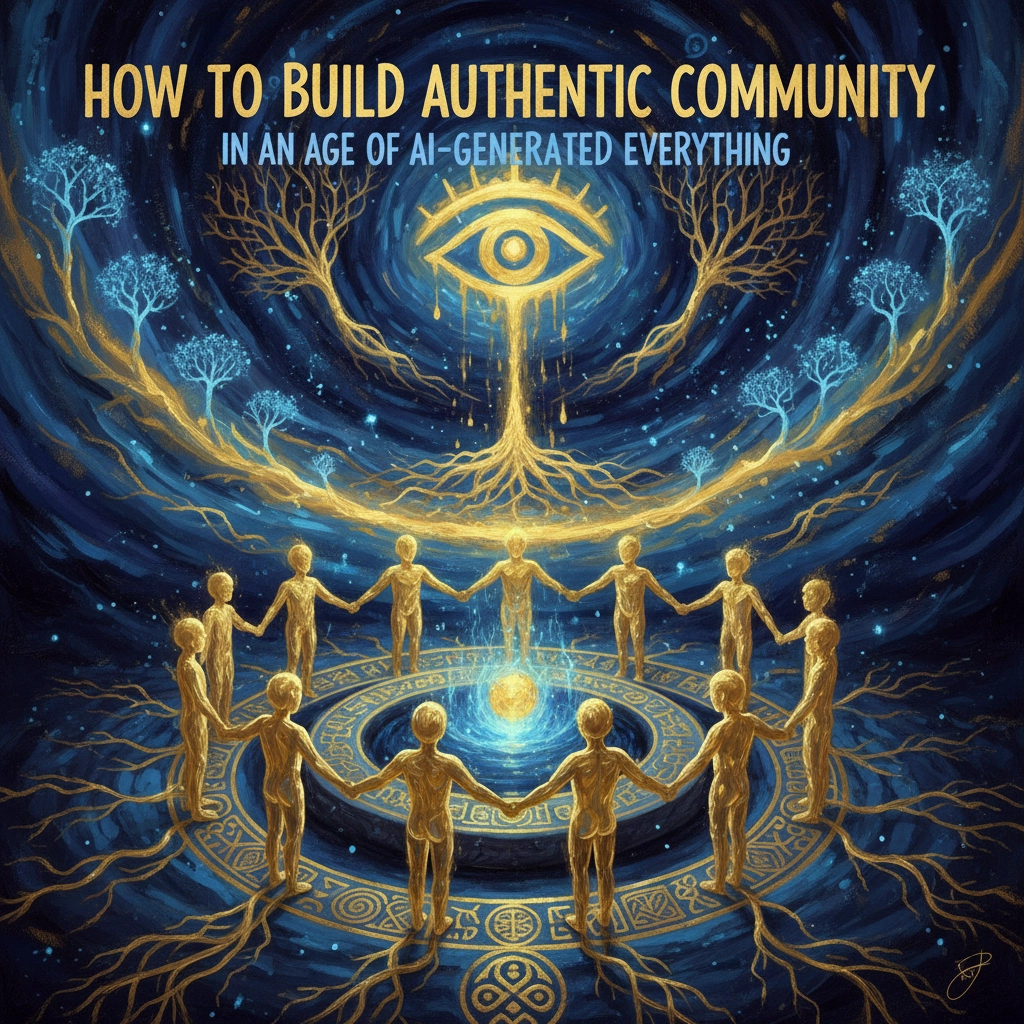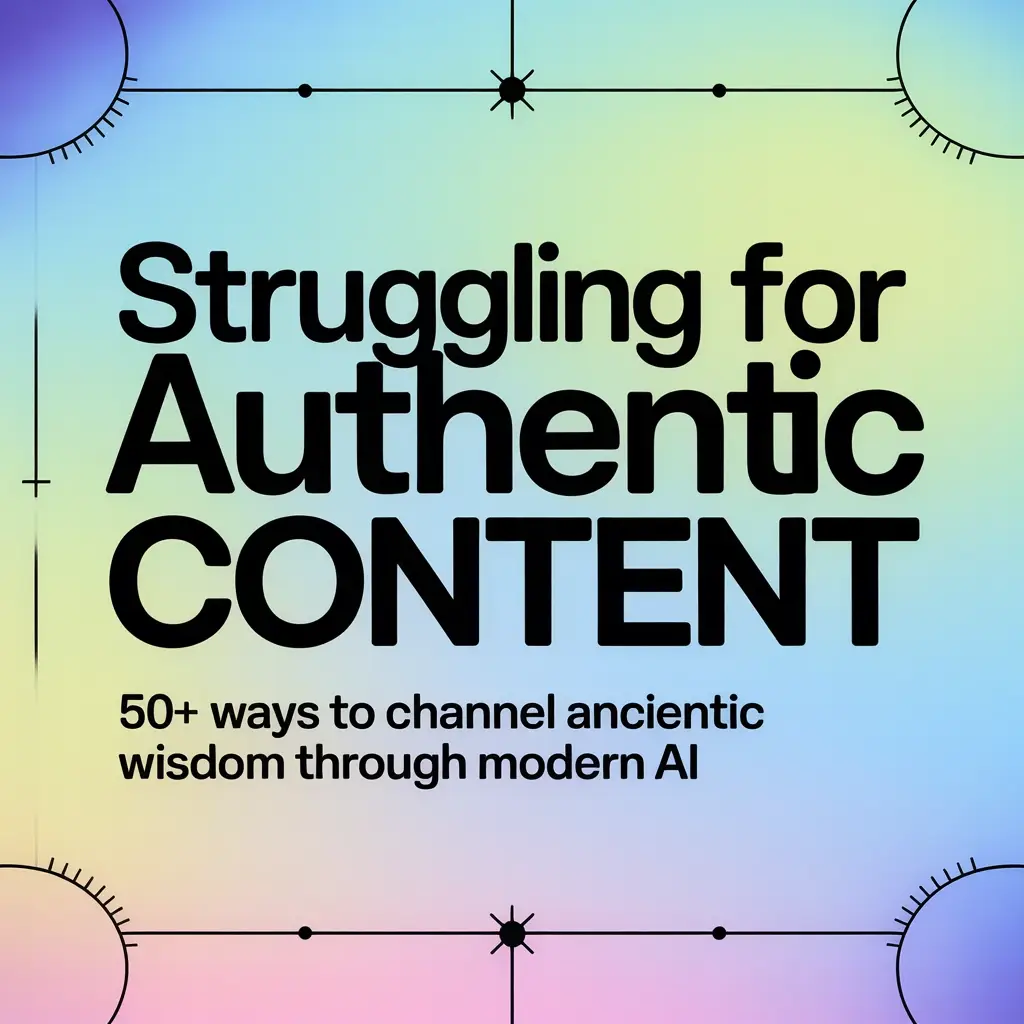Building authentic community requires deliberate human-centered approaches when AI-generated content dominates digital spaces. The rise of automated systems creates new challenges for establishing genuine connections and trust among community members.
Understanding Community Expectations
Different community members bring varying expectations to digital spaces. Some seek technical support and resource sharing. Others prioritize social connection and relationship building. Recognizing these diverse needs helps create inclusive environments that serve multiple purposes.
B2B communities face additional complexity. Decisions involve multiple stakeholders behind each participant. Teams of people influence outcomes through individual community members. This dynamic requires clear communication strategies that translate across decision-making networks.

Implementing Human Oversight Systems
Human verification prevents AI-generated errors from damaging community trust. Google's AI Overviews feature demonstrated this need when automated responses suggested harmful actions like eating stones or adding glue to food. Such incidents highlight why human oversight remains essential for content accuracy.
Establish verification processes for AI-generated content before publication. Assign human moderators to review automated responses. Create escalation paths for complex inquiries that require human judgment. These systems maintain credibility while leveraging AI efficiency.
Strategic AI Integration
AI tools can enhance community management without replacing human connection. Discord and Telegram bots provide 24/7 support across time zones. Matching algorithms connect users with similar interests. Sentiment analysis helps community leaders respond to mood changes.
Use AI for routine tasks:
- Answering frequently asked questions
- Scheduling events and sending reminders
- Analyzing engagement patterns
- Suggesting discussion topics during quiet periods
- Moderating spam and inappropriate content
Keep human involvement for:
- Complex problem-solving
- Emotional support situations
- Strategic decision-making
- Building personal relationships
- Conflict resolution

Creating Transparent Processes
Open communication about AI usage builds community trust. Share which processes use automation and which require human involvement. Explain how AI tools make decisions that affect community members. Provide clear channels for questioning or appealing automated decisions.
Document community guidelines that address AI-generated content. Establish rules for members who want to share AI-created materials. Create policies for disclosure when AI assists in content creation. These frameworks prevent confusion and maintain authenticity standards.
Building Reciprocal Relationships
Authentic communities operate on reciprocity principles. Members contribute value before expecting benefits. Community builders invest time in genuine interactions rather than automated responses. This approach creates lasting connections that survive technological changes.
Focus on giving rather than taking. Share knowledge freely. Offer help without expecting immediate returns. Celebrate member achievements. These behaviors establish trust patterns that AI cannot replicate through automated interactions.

Encouraging Vulnerable Communication
Authenticity requires vulnerability that AI cannot simulate. Community leaders who share challenges and failures create deeper connections than polished presentations. This honesty builds trust more effectively than perfect automated responses.
Create safe spaces for imperfect sharing. Encourage questions that reveal uncertainty. Celebrate learning from mistakes. These practices foster genuine human connection in environments increasingly dominated by polished AI-generated content.
Maintaining Human-Centered Spaces
Designate specific areas or times for human-only interaction. Book clubs, volunteer activities, shared meals, and informal conversations require human presence. These gatherings preserve the irreplaceable elements of authentic community building.
Technology serves supporting roles in these spaces rather than leading interactions. Use digital tools for coordination and logistics. Keep actual relationship building focused on face-to-face or voice-to-voice communication where possible.
Addressing AI Bias Concerns
AI systems carry biases from training data and programming decisions. Community builders must recognize these limitations and create correction mechanisms. Human oversight helps identify when automated systems produce unfair or exclusionary outcomes.
Regularly audit AI tools for bias in:
- Content recommendations
- User matching algorithms
- Moderation decisions
- Response generation
- Engagement measurements
Implement feedback systems that allow community members to report problematic AI behavior. Create processes for investigating and correcting biased outcomes.

Fostering Collaborative Decision-Making
Authentic communities involve members in significant decisions rather than relying solely on algorithmic recommendations. Create voting systems for important changes. Establish committees that include diverse community voices. These approaches maintain human agency in community direction.
Use AI for data collection and analysis to inform decisions. Let humans interpret results and make final choices. This combination leverages technology efficiency while preserving democratic community governance.
Measuring Authentic Engagement
Traditional engagement metrics may not capture authentic community health. Automated likes and comments can inflate activity numbers without indicating genuine connection. Develop measurement approaches that assess relationship quality over quantity.
Track meaningful indicators:
- Length and depth of discussions
- Member retention over extended periods
- Cross-platform relationship development
- Offline meeting attendance
- Member-initiated projects and collaborations
- Quality of help requests and responses
These metrics require human judgment to interpret accurately. AI can collect data, but community leaders must evaluate what the numbers mean for authentic relationship building.
Preparing for Future Challenges
AI capabilities continue advancing rapidly. Community builders must stay informed about new technologies that might affect authentic connection. Prepare adaptation strategies that maintain human-centered values while incorporating helpful innovations.
Monitor developments in:
- Natural language processing improvements
- Deepfake and synthetic media detection
- Privacy protection technologies
- Decentralized community platforms
- Blockchain-based identity verification
Plan regular community discussions about technology changes. Involve members in decisions about adopting new AI tools. This proactive approach maintains transparency and community ownership of technological integration.
Building authentic community in an AI-dominated environment requires intentional focus on irreplaceable human elements. Technology can enhance efficiency and scale, but genuine connection depends on vulnerability, reciprocity, and shared experiences that only humans can provide. Success comes from strategic AI integration that supports rather than replaces the messy, imperfect, and ultimately meaningful work of building relationships between real people.



